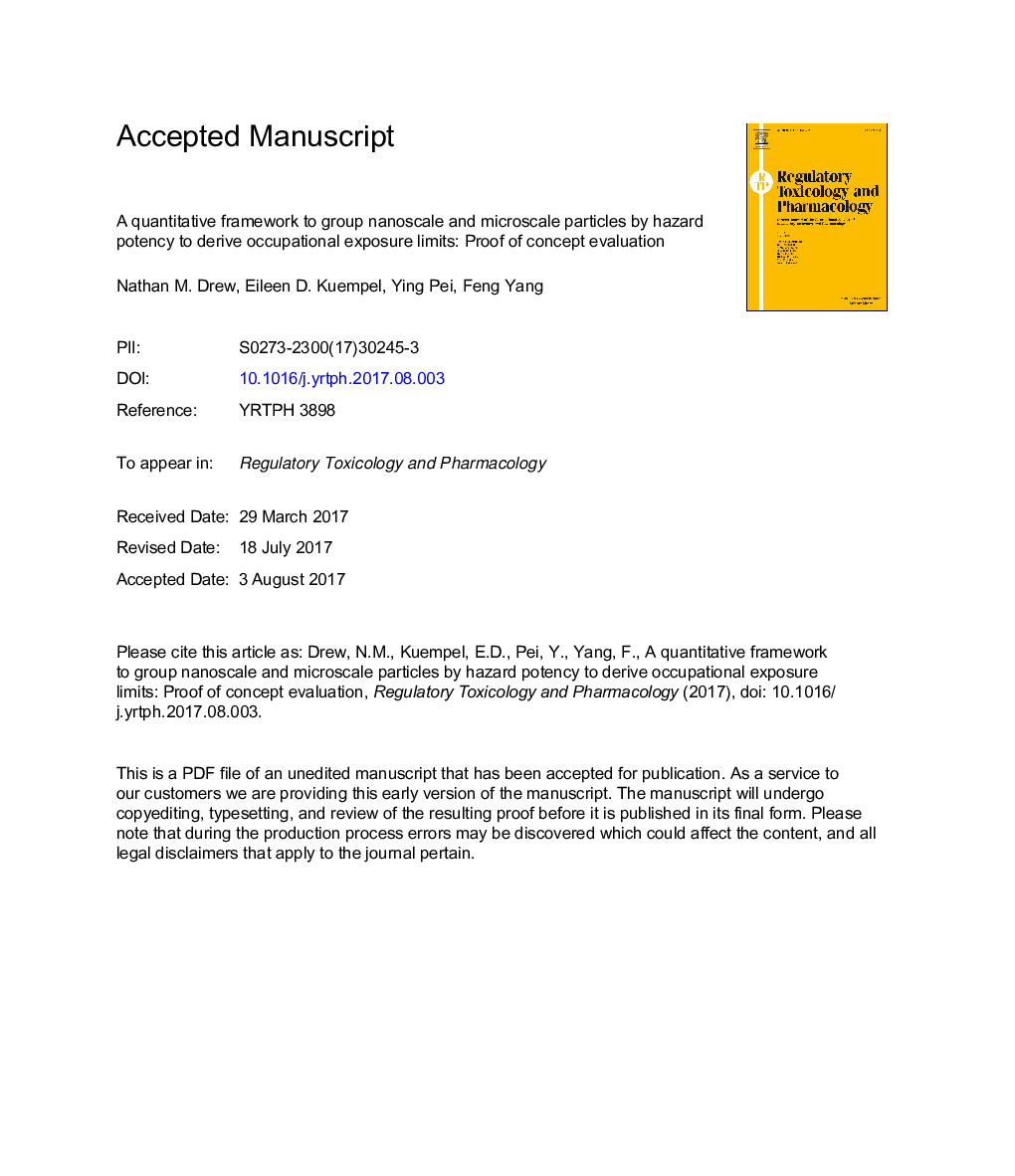| کد مقاله | کد نشریه | سال انتشار | مقاله انگلیسی | نسخه تمام متن |
|---|---|---|---|---|
| 5561200 | 1562114 | 2017 | 54 صفحه PDF | دانلود رایگان |
عنوان انگلیسی مقاله ISI
A quantitative framework to group nanoscale and microscale particles by hazard potency to derive occupational exposure limits: Proof of concept evaluation
ترجمه فارسی عنوان
چارچوب کمی برای تقسیم ذرات نانومقیاس و ذرات میکروسکوپ توسط توان خطر برای تولید محدودیت های شغلی: اثبات ارزیابی مفهومی
دانلود مقاله + سفارش ترجمه
دانلود مقاله ISI انگلیسی
رایگان برای ایرانیان
کلمات کلیدی
نانومواد، ارزیابی ریسک، مدل سازی دوز معیار، التهاب ریوی، توان بالقوه، خصوصیات فیزیکوشیمیایی، خوشه بندی سلسله مراتبی، جنگل تصادفی مدل سازی پیش بینی کننده محدودیت قرار گرفتن در معرض شغلی،
Benchmark dose modelingRisk assessment - ارزیابی ریسکPulmonary inflammation - التهاب ریهRandom forest - جنگلهای تصادفی یا جنگلهای تصمیم تصادفیPhysicochemical properties - خواص فیزیکی و شیمیاییHierarchical clustering - خوشه بندی سلسله مراتبیOccupational exposure limit - محدودیت قرار گرفتن در معرض شغلیPredictive modeling - مدل سازی پیش بینی شدهNanomaterial - نانومواد
موضوعات مرتبط
علوم زیستی و بیوفناوری
علوم محیط زیست
بهداشت، سم شناسی و جهش زایی
چکیده انگلیسی
The large and rapidly growing number of engineered nanomaterials (ENMs) presents a challenge to assessing the potential occupational health risks. An initial database of 25 rodent studies including 1929 animals across various experimental designs and material types was constructed to identify materials that are similar with respect to their potency in eliciting neutrophilic pulmonary inflammation, a response relevant to workers. Doses were normalized across rodent species, strain, and sex as the estimated deposited particle mass dose per gram of lung. Doses associated with specific measures of pulmonary inflammation were estimated by modeling the continuous dose-response relationships using benchmark dose modeling. Hierarchical clustering was used to identify similar materials. The 18 nanoscale and microscale particles were classified into four potency groups, which varied by factors of approximately two to 100. Benchmark particles microscale TiO2 and crystalline silica were in the lowest and highest potency groups, respectively. Random forest methods were used to identify the important physicochemical predictors of pulmonary toxicity, and group assignments were correctly predicted for five of six new ENMs. Proof-of-concept was demonstrated for this framework. More comprehensive data are needed for further development and validation for use in deriving categorical occupational exposure limits.
ناشر
Database: Elsevier - ScienceDirect (ساینس دایرکت)
Journal: Regulatory Toxicology and Pharmacology - Volume 89, October 2017, Pages 253-267
Journal: Regulatory Toxicology and Pharmacology - Volume 89, October 2017, Pages 253-267
نویسندگان
Nathan M. Drew, Eileen D. Kuempel, Ying Pei, Feng Yang,
